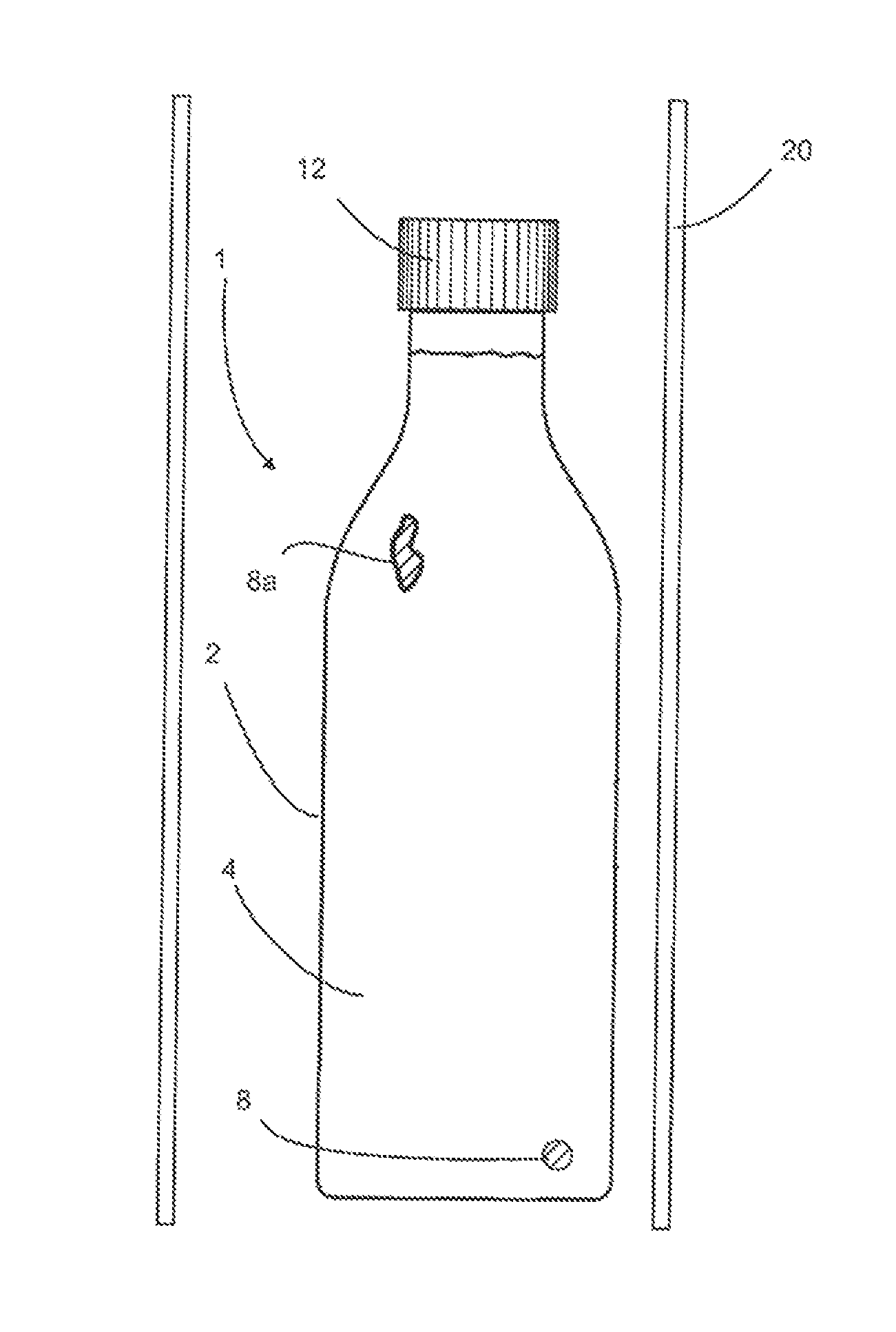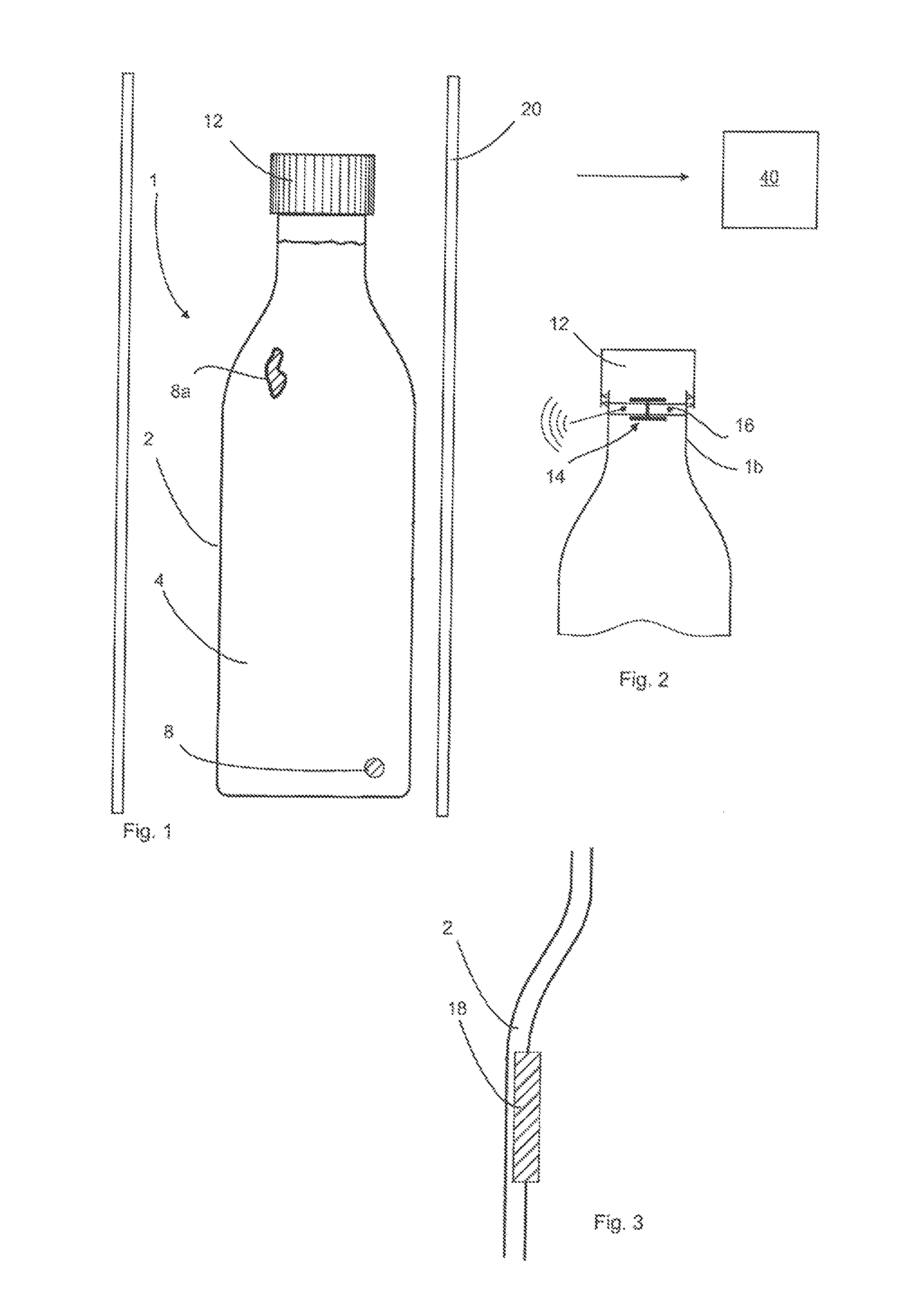Test container for testing inspection devices
a technology for inspection devices and test containers, applied in the field of containers, can solve the problems of inability to use test containers, no longer being recognised later, and the test container will pass through inspection devices, etc., and achieve the effect of easy swirling up and being recognized very quickly
- Summary
- Abstract
- Description
- Claims
- Application Information
AI Technical Summary
Benefits of technology
Problems solved by technology
Method used
Image
Examples
Embodiment Construction
[0029]FIG. 1 shows a schematic representation of a container 1 according to embodiments of the invention. In this case this container has a circumferential main body 2 as well as a base. A liquid 4 is disposed within the container.
[0030]Furthermore the container has a closure 12, such as a screw cap in this case, which closes the container in a liquid-tight manner.
[0031]A deliberately introduced foreign body 8 is located within the container or the liquid respectively. This is illustrated here as circular, but it may also have other geometric configurations. In addition it would also be possible to dispose a further foreign body 8a on an inner wall of the container. In this way those inspection processes which react to defects on or in the wall of the container can also be controlled. In addition defects could also be applied in a targeted manner, for example on the main body of the container, such as for example scratches, material irregularities and the like. It would also be poss...
PUM
| Property | Measurement | Unit |
|---|---|---|
| size | aaaaa | aaaaa |
| physical characteristics | aaaaa | aaaaa |
| pressure | aaaaa | aaaaa |
Abstract
Description
Claims
Application Information
 Login to View More
Login to View More - R&D
- Intellectual Property
- Life Sciences
- Materials
- Tech Scout
- Unparalleled Data Quality
- Higher Quality Content
- 60% Fewer Hallucinations
Browse by: Latest US Patents, China's latest patents, Technical Efficacy Thesaurus, Application Domain, Technology Topic, Popular Technical Reports.
© 2025 PatSnap. All rights reserved.Legal|Privacy policy|Modern Slavery Act Transparency Statement|Sitemap|About US| Contact US: help@patsnap.com


